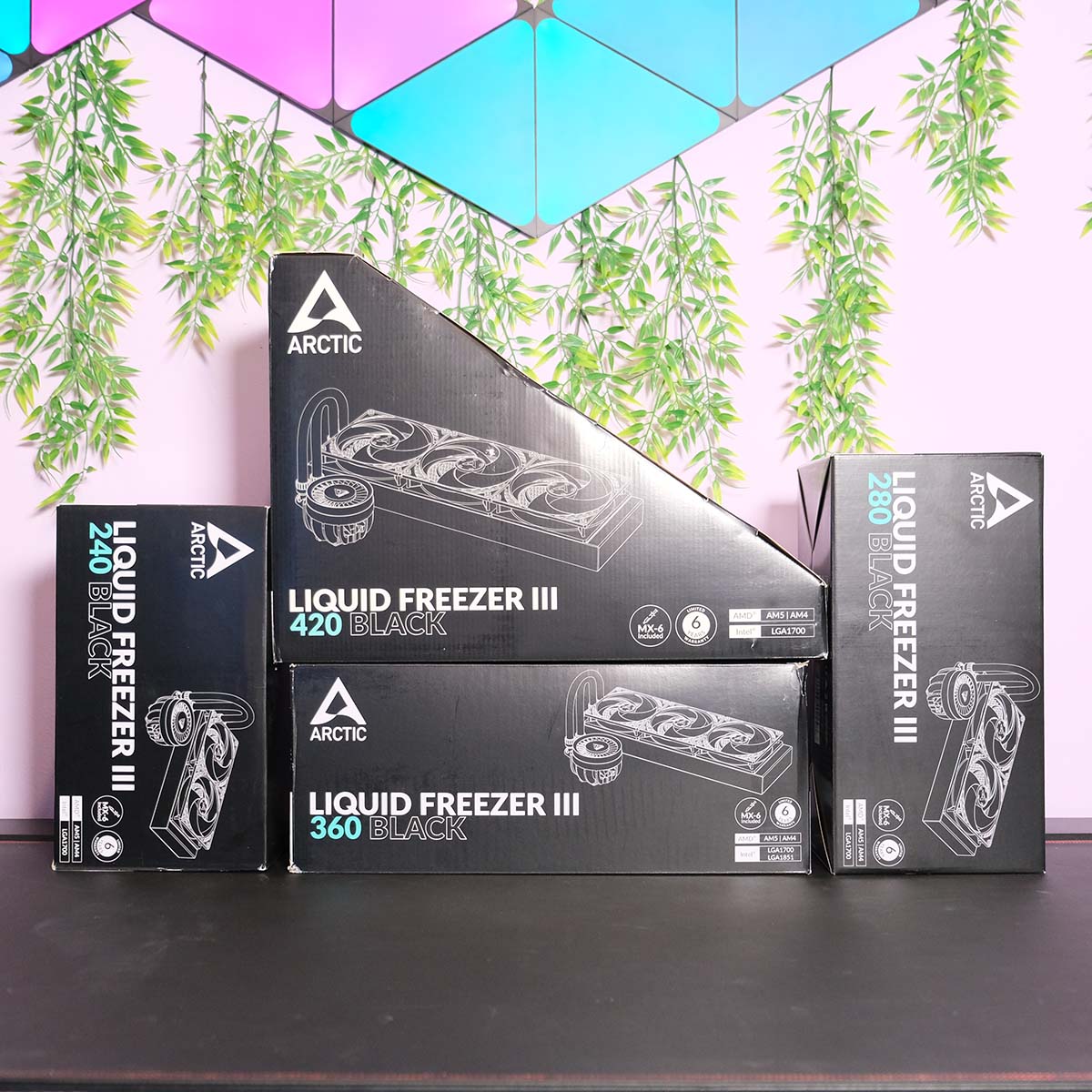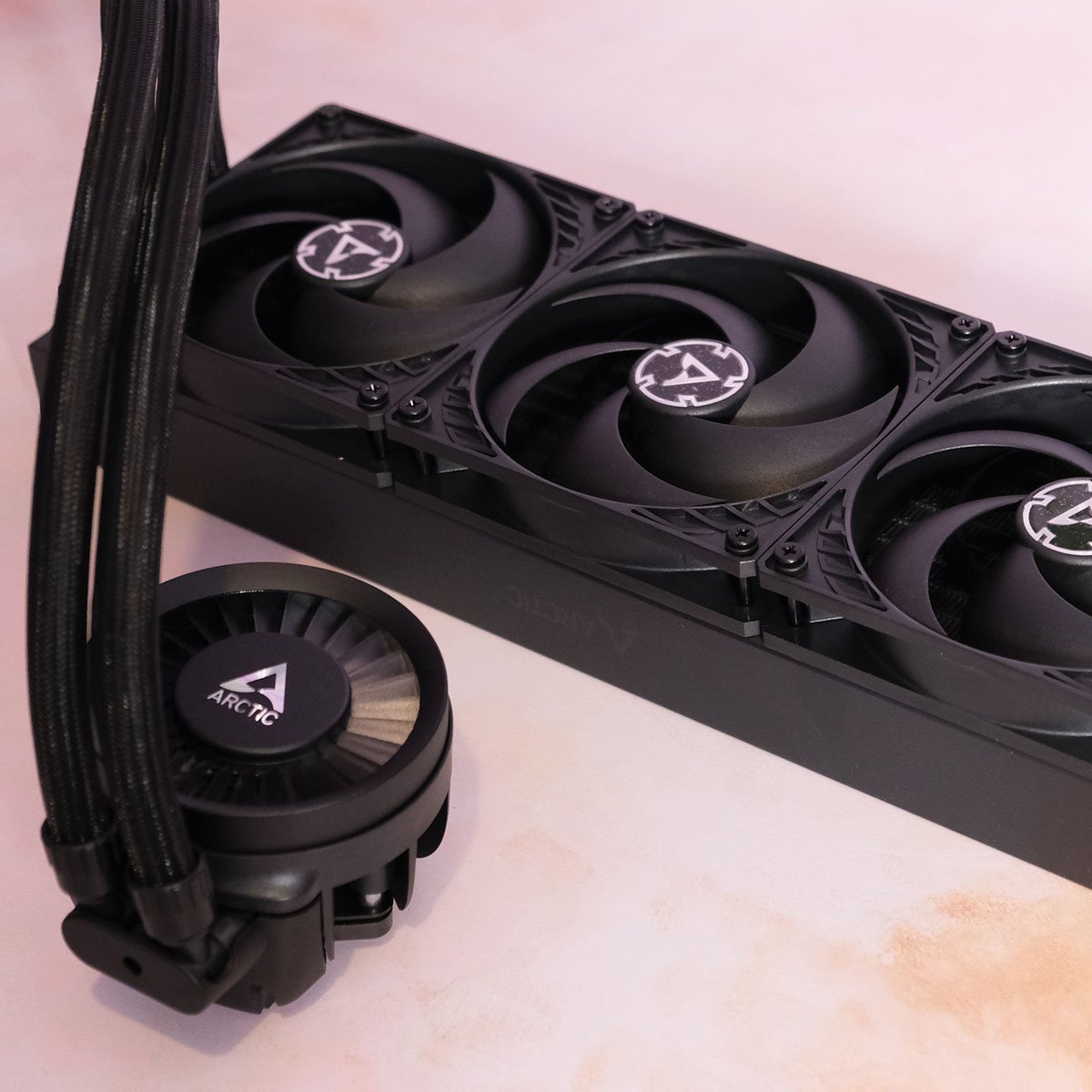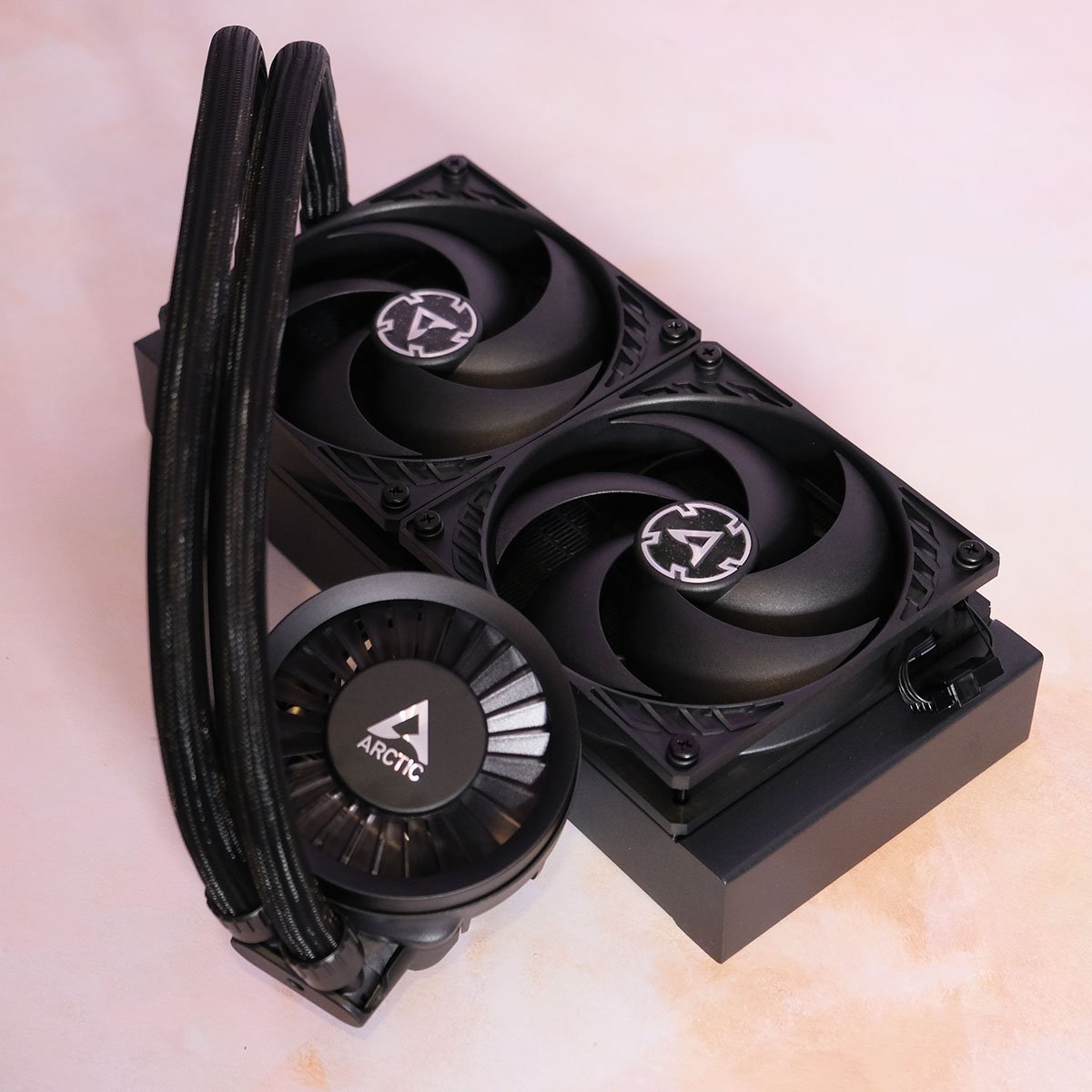Weird to say when you’re in an office surrounded with the latest graphics cards and processors, yet for reasons I can’t quite explain, I’ve a soft spot for a high-quality cooler.
Maybe it stems back to my overclocking youth, when keeping temperatures in check was easier said than done. There was a reason fans were branded as Tornado way back when. These days, it’s much easier to run potent processors cool at all times without gale-force airflow.
Truth be told on modern CPUs, even a reference cooler will suffice for some users. Then again, Club386 readers aren’t most users. We enthusiasts like to tinker, and with good reason. Building with the right cooler in situ can enable lower temperatures and reduced noise.
It’s the latter element that fascinates me. So much so that my current work PC is entirely fanless. Passive cooling, however, isn’t recommended for gamers rocking a decent graphics card. In these scenarios, all-in-one liquid coolers (AIOs) have become somewhat of a gold standard. They’re easy to install, offer high-end performance, and typically look the part with minimal clutter around the CPU socket.
Sizing It All Up
From the many coolers Club386 has tested, Arctic’s Liquid Freezer III stands out as a recommended choice. It’s not only a top performer but comes with all the value-adds I’d be looking for in a comprehensive all-in-one solution. These include a well-thought-out bundle complete with spare thermal paste, good-quality fans, and a choice of 240 (£53.89), 280 (£60.82), 360 (£66.98) and 420 (£71.60) form factors, each with the option of RGB lighting. Not to mention a stellar six-year warranty and superb value.
So, if Liquid Freezer III is the AIO to go for, which size do you need? Shedding some light, I’ve gotten my hands on all four available variants and have spent this past week putting them through their paces on AMD’s very best consumer CPU, the Ryzen 9 9950X.
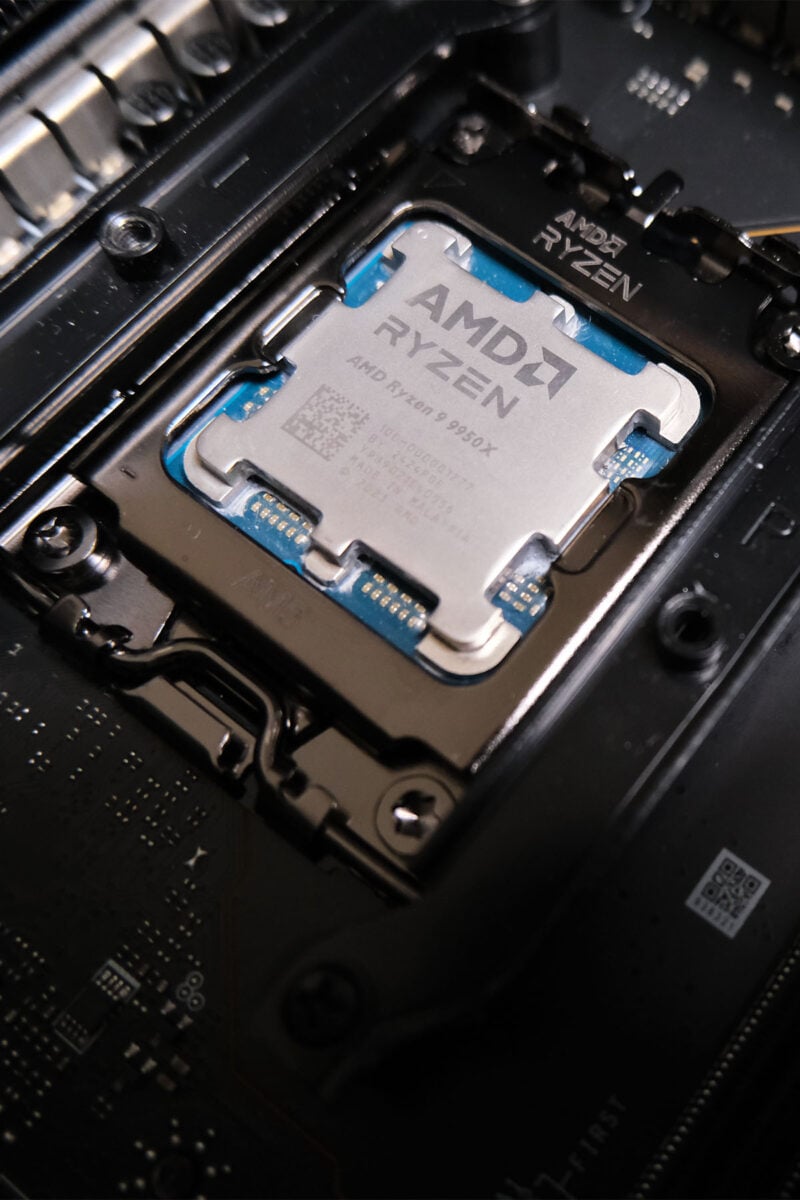
A few words on benchmark methodology before I get to the results. Each cooler is tested on Club386’s 2024 test platforms, whose components are listed above.
There’s a common misconception that Fractal Torrent isn’t an ideal case for AIO coolers. On the contrary, I’ve found it to be a great fit with the stock 180mm fans relocated as bottom intakes, and the radiator and rear exhaust fans all acting as exhausts. This configuration provides an excellent balance of low CPU and GPU temperatures alongside minimal noise.
Any number of factors ranging from case configuration to silicon quality can influence real-world performance, so your own results may differ from my own, yet all four coolers being evaluated in the same PC at an ambient temperature of ~21°C gives you a consistent insight into their abilities.
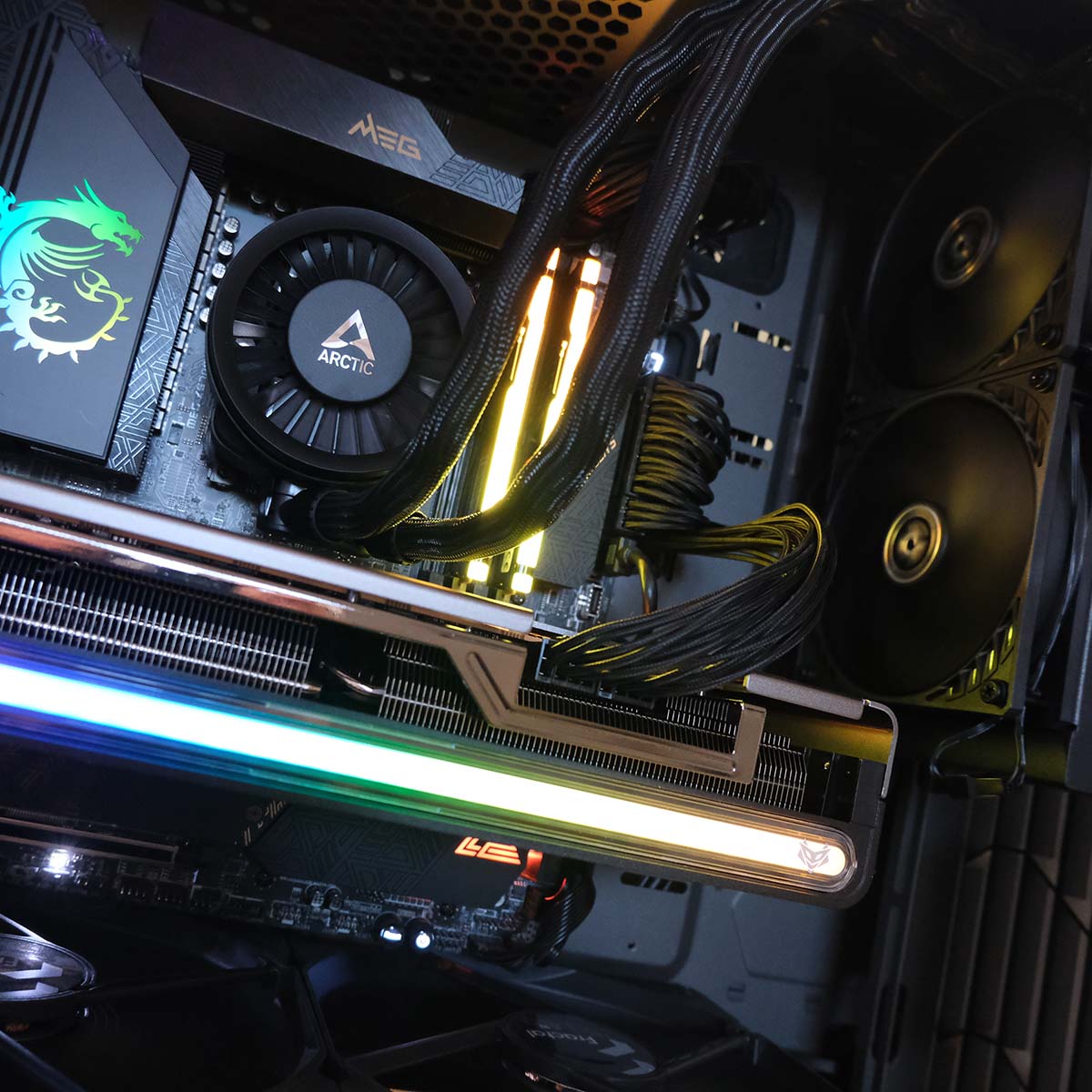
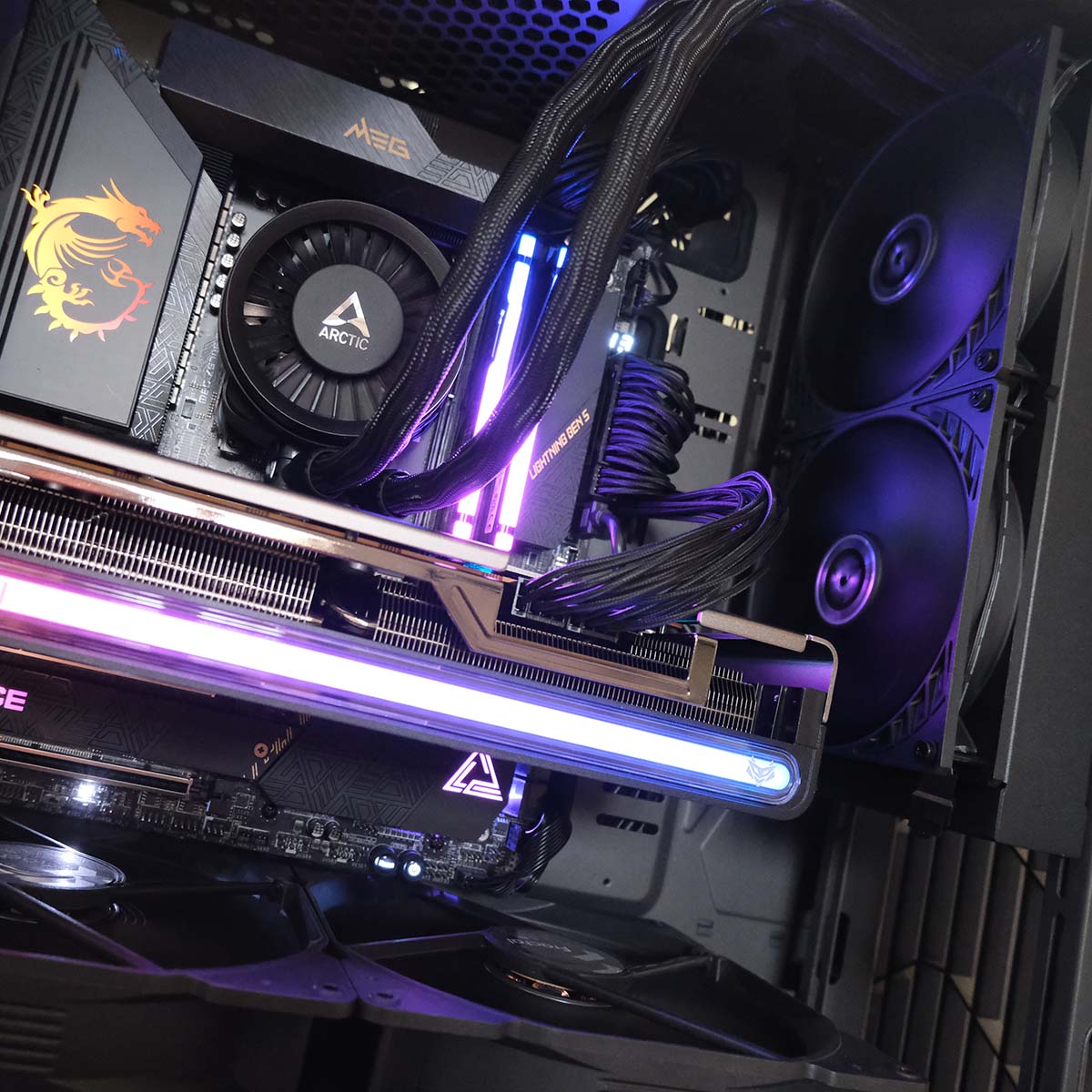
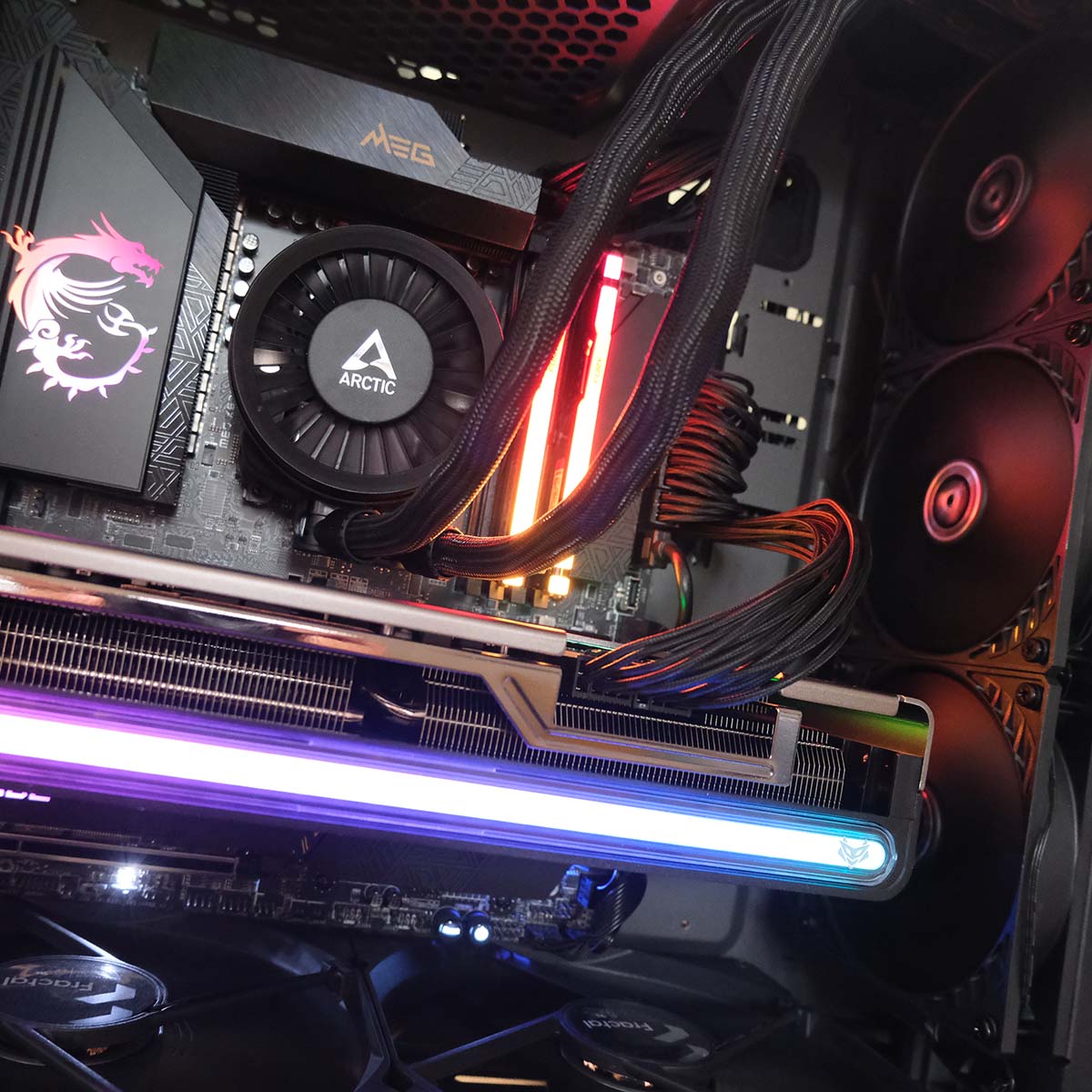
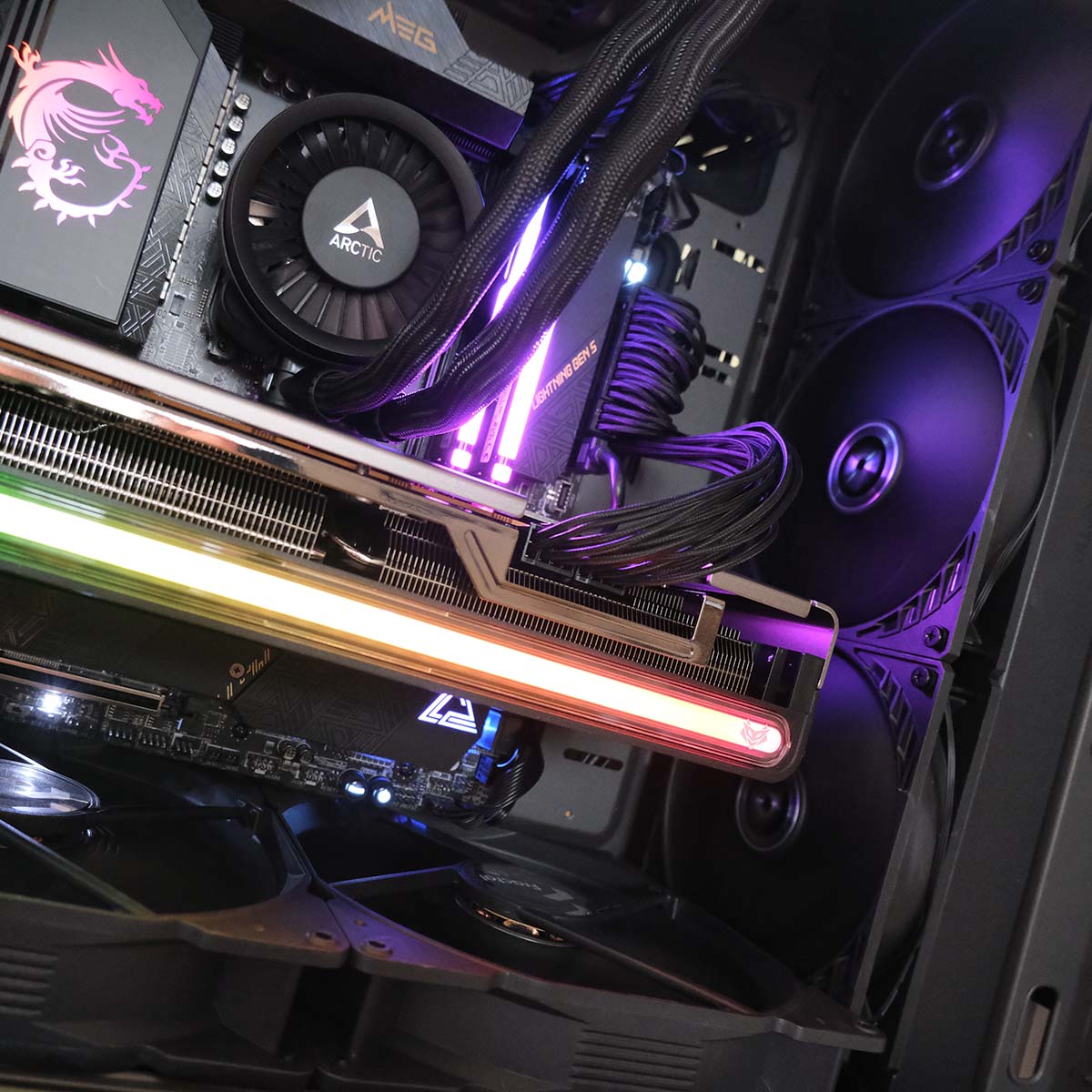
There’s also the matter of which settings to use. Another upside of Liquid Freezer III is the bundled PWM splitter, allowing for pump, VRM fan and radiator fans to all be managed independently. Given that I like my PC quiet, speeds are customised throughout the build to create a level playing field.
Radiator fans are set to ~700RPM, the pump is turned down a fraction to ~2,000RPM, while the VRM fan is dialled right back to ~1,000RPM. Way short of the respective maximums, yet these settings limit noise to a gentle hum – they’re the speeds I’d choose to run if it were my PC. As for case fans, the large 180mm intakes and single 140mm rear exhaust are all fixed to 30%, which equates to ~440RPM and ~720RPM, respectively.
Performance Testing
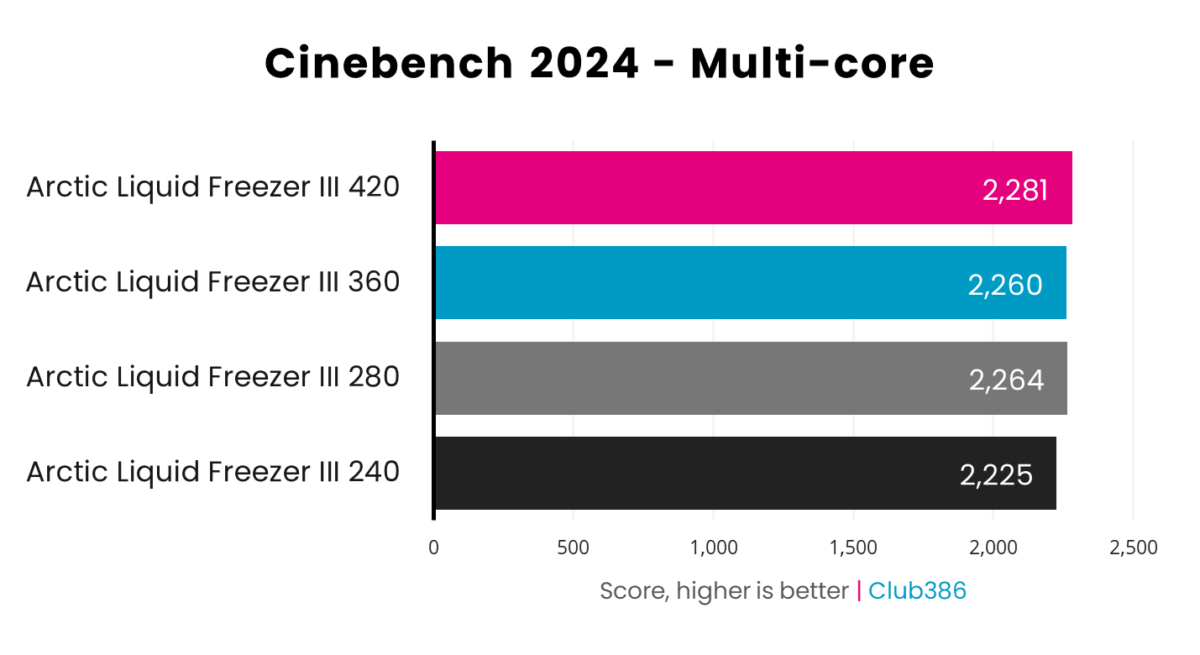
First an elongated run of Cinebench 2024 to serve as a sanity check. Performance is in line with expectations, and though there’s little to separate the four AIO form factors, the 420 ekes out a little extra over its smaller siblings. A sign of things to come.
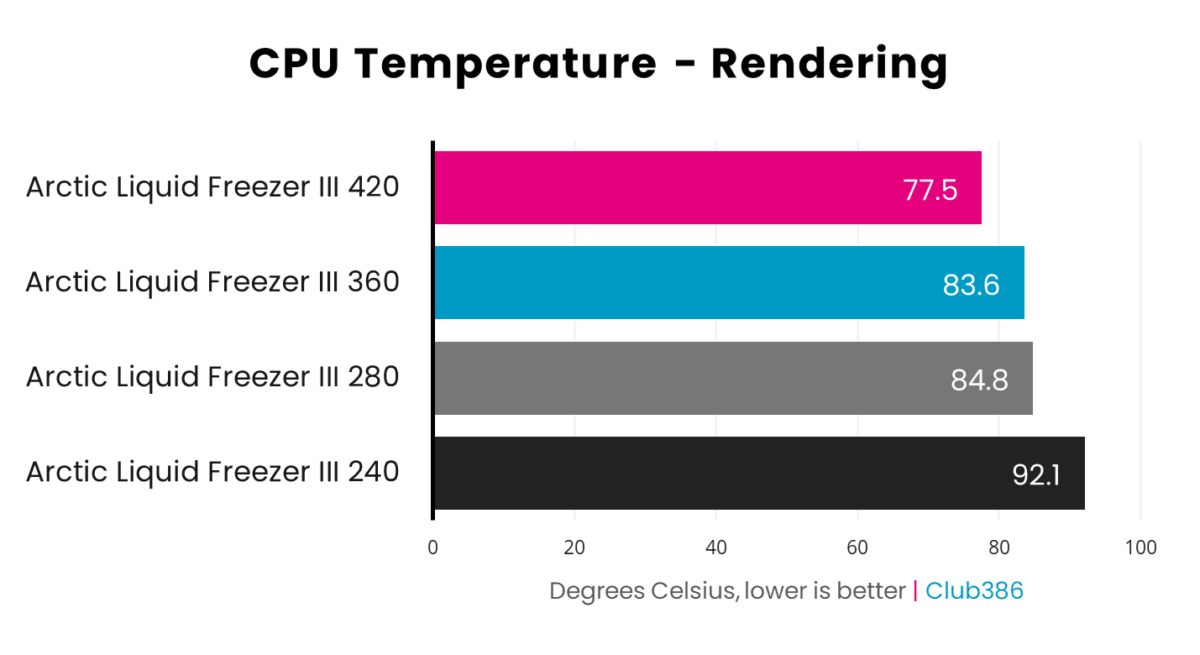
Here’s what is happening with regards to Ryzen 9 9950X core temperature during the aforementioned Cinebench 2024 stress test. Given how quiet the PC is, and the low speed at which all fans are operating, each AIO is adept at shifting the heat when all cores are placed under maximum load.
There is a noticeable difference across form factors. Liquid Freezer III 420 is 16% cooler than the smallest radiator on show, resulting in a healthy 14.6°C reduction in core temperature. There’s hardly anything separating the 360 (triple 120) or 280 (dual 140), however, which doesn’t come as a surprise given how close they are in terms of overall surface area (1,349cm2 vs 1,221cm2).
It’s the combination of low temps and low noise that sets the bigger, better AIOs apart. Liquid Freezer III 240, while perfectly capable, has to work a lot harder. In order to get core temperature down from 92.1°C to 84.6°C (on par with the 280), I had to raise fan speed on the dual 120s from ~700RPM to ~1,200RPM, and pump speed from ~2,000RPM to ~2,500RPM. The smallest cooler can get there, but at the expense of system noise, which climbs from a whisper quiet 30.6dB to a clearly audible 38.2dB.
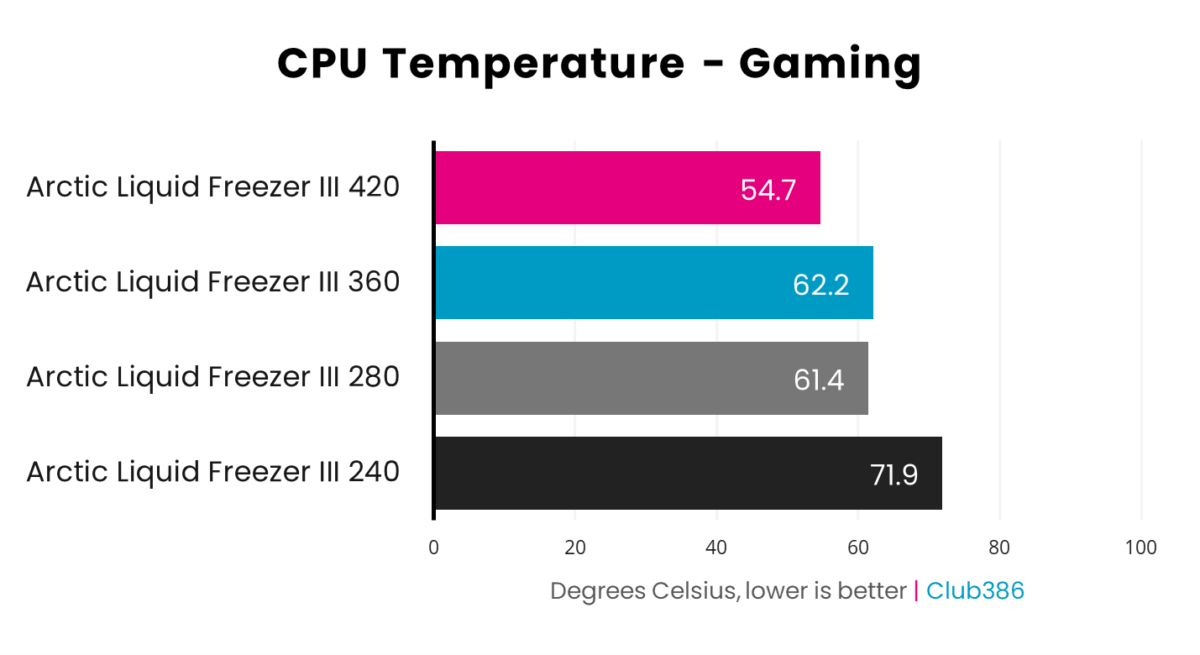
Don’t do a lot of rendering? Sustained all-core load isn’t indicative of most use cases. If you’re a gamer first and foremost, you’ll notice considerably lower CPU temperatures while the action unfolds. Liquid Freezer III 420 is practically cold at this point, despite dealing with the extra heat thrown into the case from my Sapphire Nitro+ Radeon RX 7800 XT graphics card.
Heck, when in game, even the smallest 240 AIO keeps suitably chilled. Handy to know if chassis or budgetary confines restrict you from anything larger.
Overclocking and Acoustics
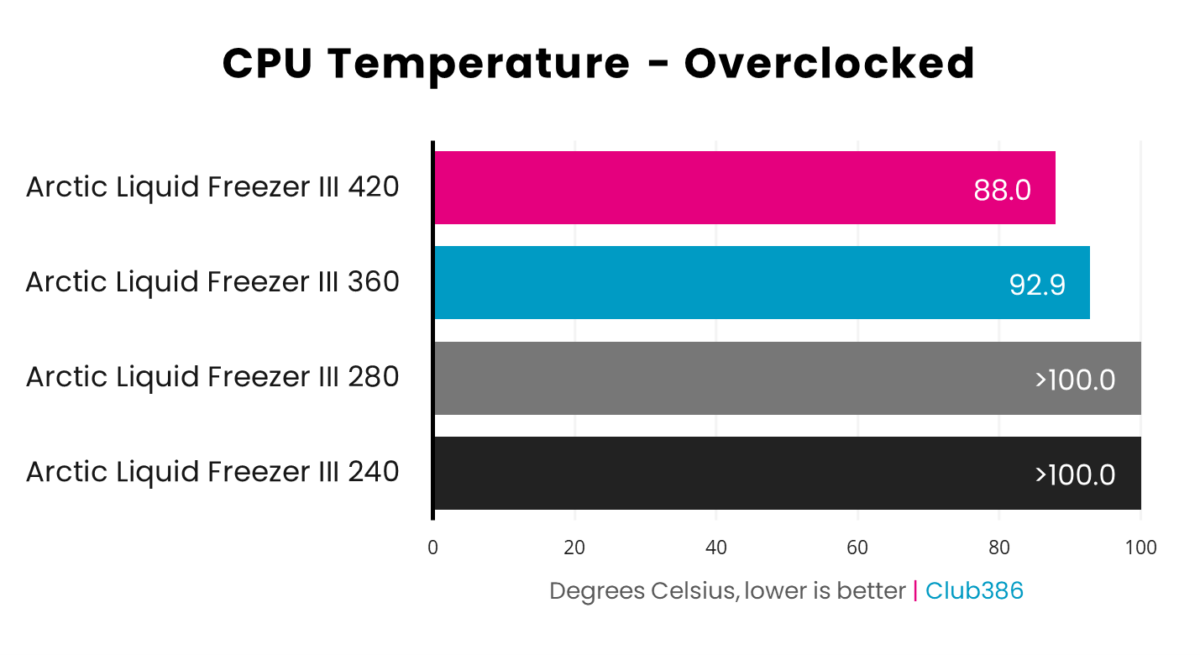
At the other end of the spectrum, those who like to push their hardware to the limit must gravitate toward a 420 or 360. In this overclocking test, radiator fan, VRM fan and pump speeds are all turned up to 100%. I then manually force the Ryzen 9 9950X chip to 5.3GHz across all cores using a stable 1.31V.
Repeating the Cinebench stress test causes heat to ramp-up quickly and sharply, so much so that Freezer III 280 and Freezer III 240 both fail to keep core temperature below 100°C, even with fan speed cranked right up. For the sake of my chip’s health, I cut the test short as soon as I see a three-digit temperature. Unless you’re standing by with LN2, I recommend the same level of caution.
No such problems for Freezer III 420 and Freezer III 360, both of which are happy and willing to continue with the overclock in place. An extreme scenario, yet it’s nice to know the headroom is there if needed.
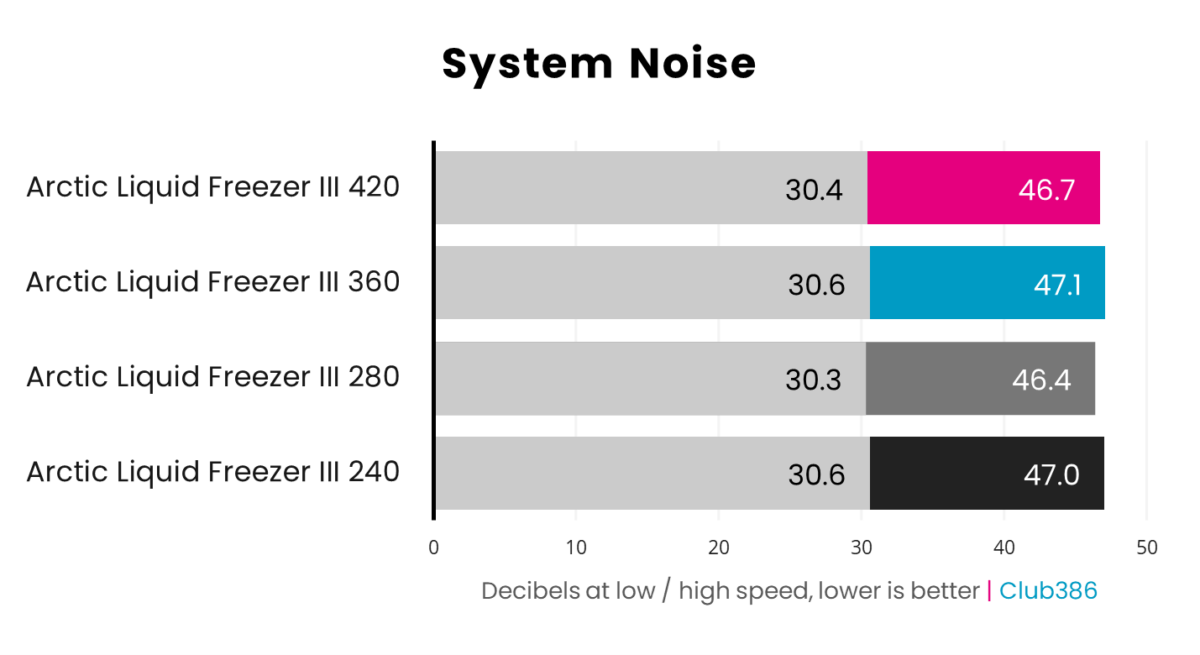
Here I chart the overall noise output of the test PC when outfitted with each respective cooler, both with my preferred low fan speeds and with the cooler running at full tilt. There isn’t much in it, and though the 140-based coolers record fractionally lower readings than the 120-based, you’d do well to notice the difference when fan speeds are standardised.
The chart only tells half the story. At 30.6dB, Liquid Freezer III 240 returns a CPU temperature of 92.1°C during all-core rendering. Liquid Freezer III 420 is a smidge quieter at 30.4dB and also a lot cooler at 77.5°C.
If you have a target temperature you’re aiming for, you may need to boost fan speed on smaller AIOs to get there. Remember, to get core temperature below 85°C, Liquid Freezer III 240 fan and pump speeds had to be increased to ~1,200RPM and ~2,500RPM, respectively, taking noise up to 38.2dB and resulting in a much louder system.
Summary
Choosing the right CPU cooler has a profound effect on your overall PC experience. Extracting optimal performance, delivering safe temperatures, and minimising noise output are all within the remit of this one crucial component, so it pays to choose wisely.
For AMD Ryzen 9 9950X, a competent all-in-one liquid cooler is a recommended path to achieving all of the aforementioned goals. Then comes the question of which size to go for, and the answer ultimately depends on each user’s needs and aspirations.
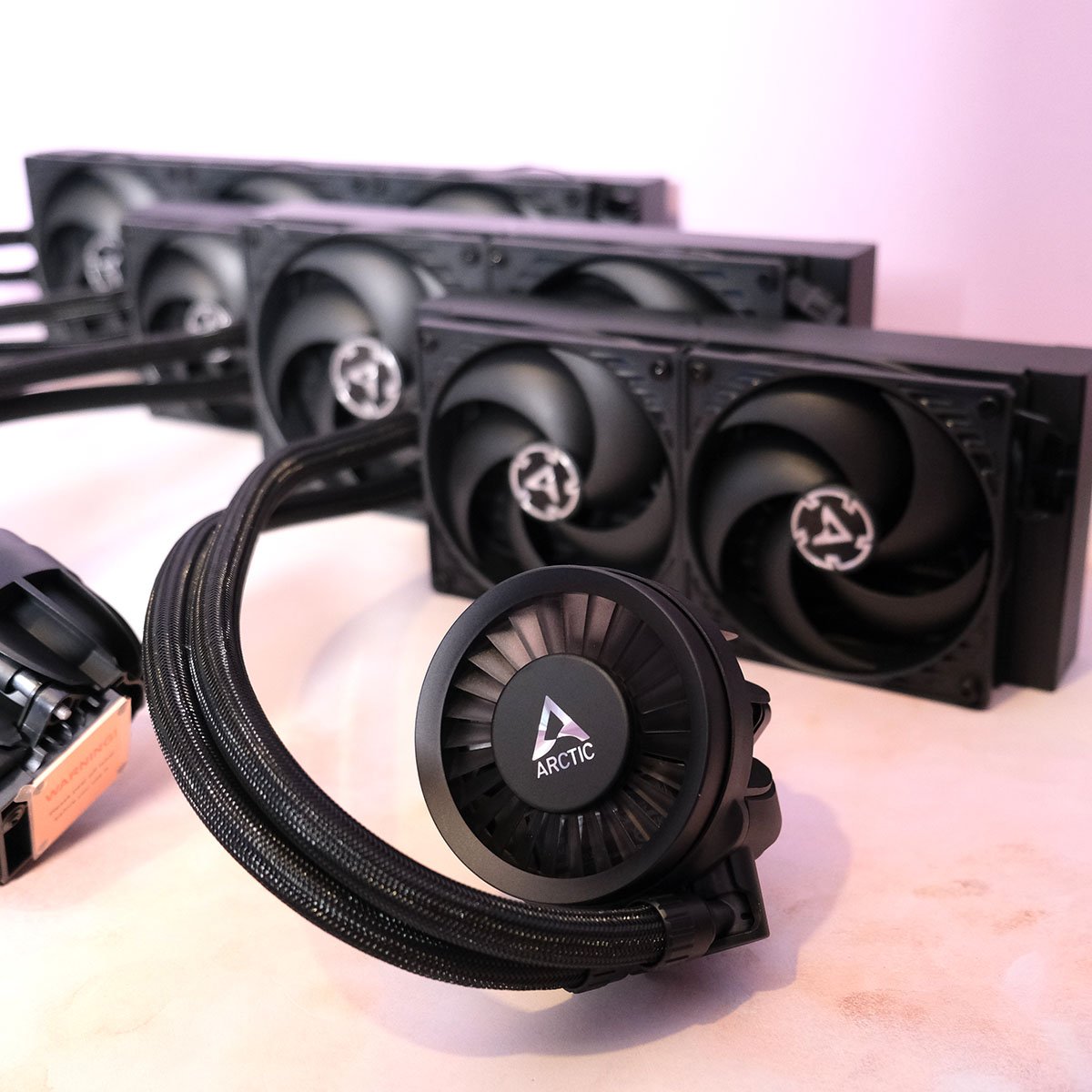
Power users, content creators, and dyed-in-the-wool overclockers prone to pushing their CPU to the limit should consider Liquid Freezer III 420 a go-to solution. Performance stands head and shoulders above other form factors, and the combination of radiator surface area plus a trio of 140mm fans allows it to shift heat with minimal effort, resulting in the cool and quiet conditions I crave.
At merely £71.60, I’m confident in stating no other cooler offers this level of performance and value. The only caveat, and it’s an important one, is that not every PC case can easily accommodate a 420, especially one as thick as this. Measure once, measure twice, and then make it fit.
If you don’t feel the need as a gamer, or there simply isn’t room, a 280/360 is a safe bet. Readily available for under £70, either is an ideal companion to AMD’s premium processor. Similar in performance and acoustics, the decision comes down to individual preference and chassis compatibility. A 360 has the edge in overall performance, a 280 can be a tad quieter; it’s six of one and half a dozen of the other.
Last but not least, Ryzen 9 9950X’s tendency to run cooler than the prior generation brings 240 AIO cooling back into the equation. You may need to ramp-up fan speeds to prevent a performance drop off, yet for a small-form-factor build, Liquid Freezer III 240 gets the job done.
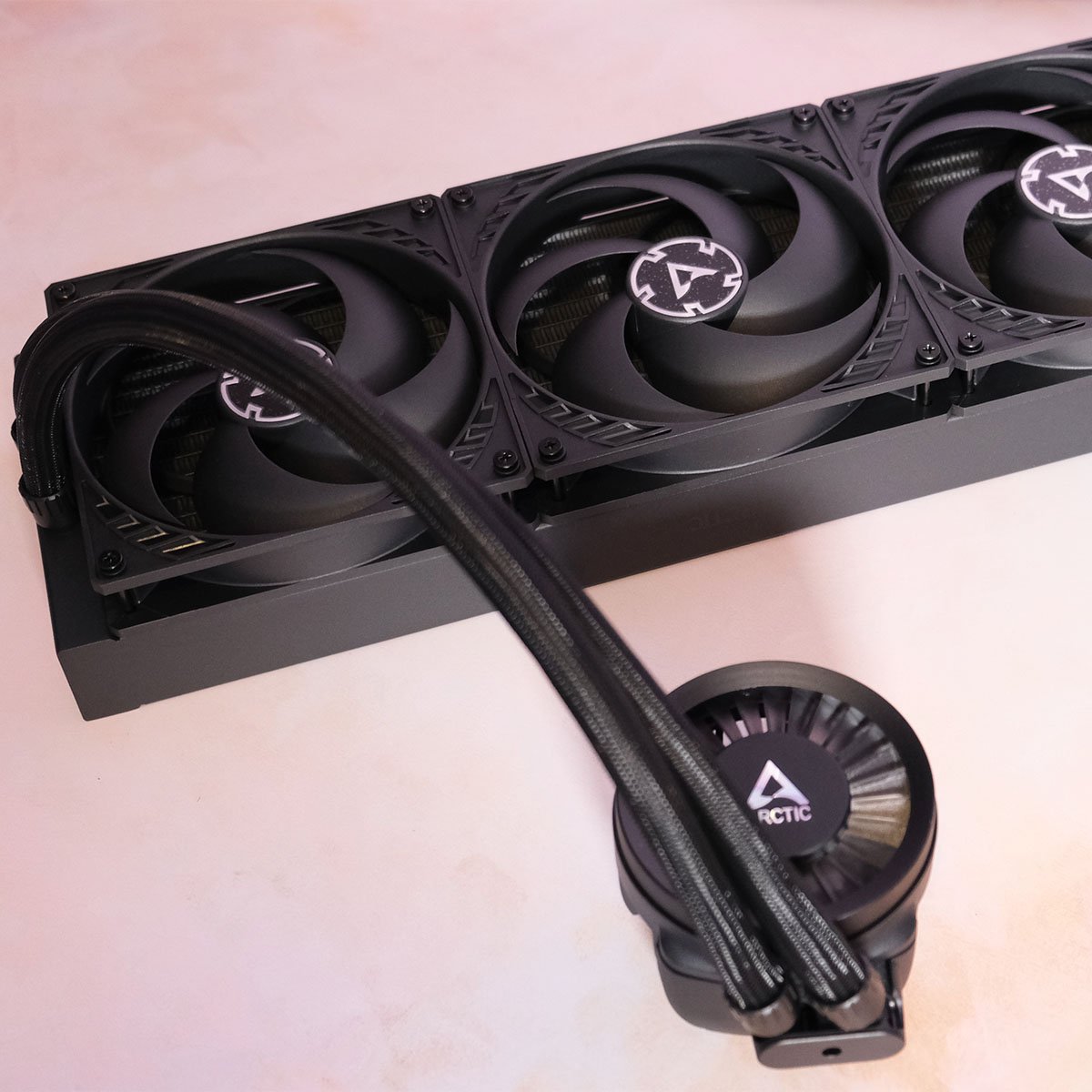
Best for Enthusiasts: Arctic Liquid Freezer III 420
Arctic’s biggest and best AIO is an enviable choice. Ultra-competitive pricing makes it hard to beat; just make sure there’s room in your chassis.
